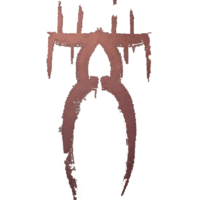Lore:Boldclaw Clan
Boldclaw Clan was one of numerous clans of Reachfolk that lived in the Reach. They were known for their reverence to Namira and their peaceful ritual of Namira's Dance.[1]
History[edit]
At some point, before 2E 582 Gemma Pamphelius, a Cultural Scribe visited the Boldclaw Clan. She was graciously welcomed when she introduced herself as a scholar. Gemma was allowed to observe and record one of the Boldclaw Clan ceremonies: The Namira's Dance. Although she did not share beliefs regarding the Namira she described the ritual as happy and lovely in nature and full of beauty. Gemma Pamphelius' account was later published. The book Namira's Dance was a common sight during the Second Era.[1]
Culture[edit]
Members of the Boldclaw Clan deeply respect Namira, who they refer to as Spirit Queen and Goddess of Death. They see Namira as a powerful force of the natural world as well as a spirit of darkness, endings, and rebirth.[1]
Namira's Dance is an ancient ritual of the Boldclaw Clan. To honor Namira's effect on both life and death they dedicated an ancient ceremony to Namira, the Spirit Queen. The ritual requires the participation of the entire Boldclaw clan. Every member, from the smallest children to the oldest hunters, gather around a large fire in the center of a clearing. Participants typically wear dark colors and apply dark paint across their faces and throats. Some, however, arrive naked to symbolize the state of one's arrival to the world. Every member who is fit enough dances together "in a dizzying display of both death and rebirth, both terrible and beautiful at the same time". Those that dance naked represent how they are born into the world, while those who wear dark colors and paint represent death. Although blood is spilled during the dance, it involves no visible violence. Members of the clan use the collected blood for various purposes. Some sweep the blood under their eyes, others press bloody handprints to the ground. Despite the presence of blood, these celebrations are joyous in nature. The ritual is peaceful and festive. It was believed that honoring blood and fearing it equally is at the heart of the ritual.[1]
See Also[edit]
Books[edit]
- Namira's Dance by Gemma Pamphelius, Cultural Scribe — An eyewitness account of a Reachman ceremony dedicated to Namira
References[edit]
- ^ a b c d Namira's Dance — Gemma Pamphelius, Cultural Scribe
